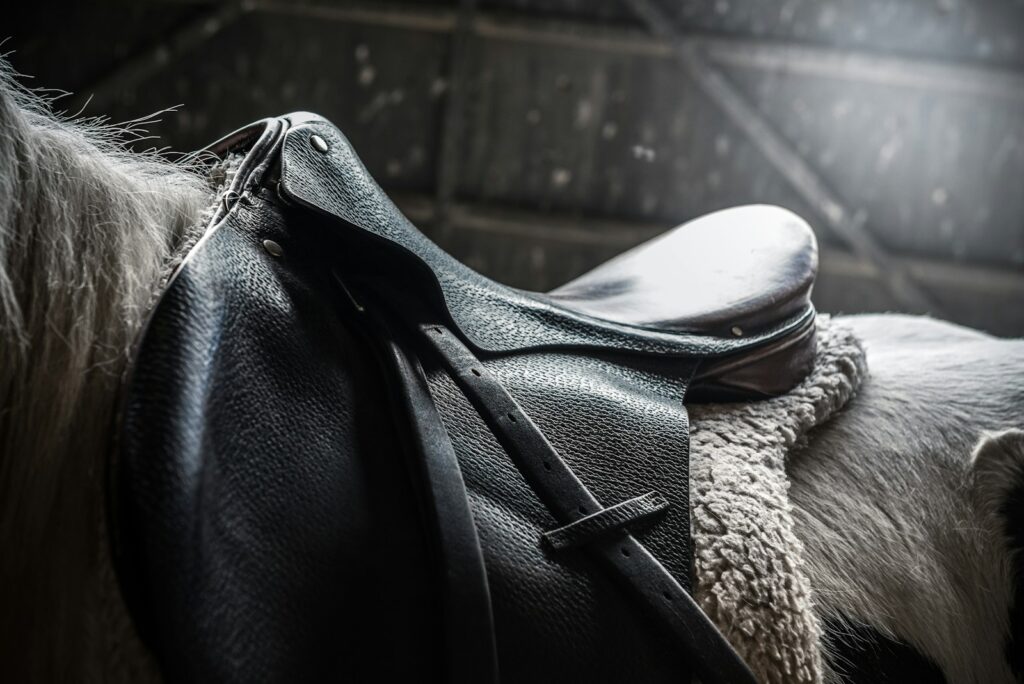Introducing a saddle to a young horse represents one of the most critical milestones in equine training. This process lays the groundwork for all future riding experiences and significantly influences how your horse will respond to human interaction throughout its life. A thoughtfully executed saddle introduction creates confidence, builds trust, and establishes a foundation of mutual respect between horse and handler. While many inexperienced trainers rush this pivotal phase, causing anxiety and resistance that might take years to overcome, a methodical and patient approach yields a willing equine partner who accepts the saddle as a natural extension of the human-horse relationship. This comprehensive guide will walk you through the essential steps to successfully introduce your young horse to the saddle, ensuring a positive experience that sets you both up for success.
Establishing Prerequisite Groundwork

Before ever bringing a saddle near your young horse, certain foundational skills must be firmly established. Your horse should demonstrate comfort with being handled all over its body, including sensitive areas like the belly, flanks, and girth region where the saddle and cinch will eventually make contact. The horse should stand quietly for grooming, respect personal space, and respond reliably to basic leading cues including walk, halt, and backing up. Additionally, your young horse should be comfortable with having a soft rope draped over its back and around its belly, which simulates the pressure and sensation of a cinch without introducing the weight and unfamiliarity of an actual saddle. These prerequisites ensure your horse has developed the trust and handling experience necessary to process the more complex introduction of saddling without becoming overwhelmed.
Creating a Positive Training Environment
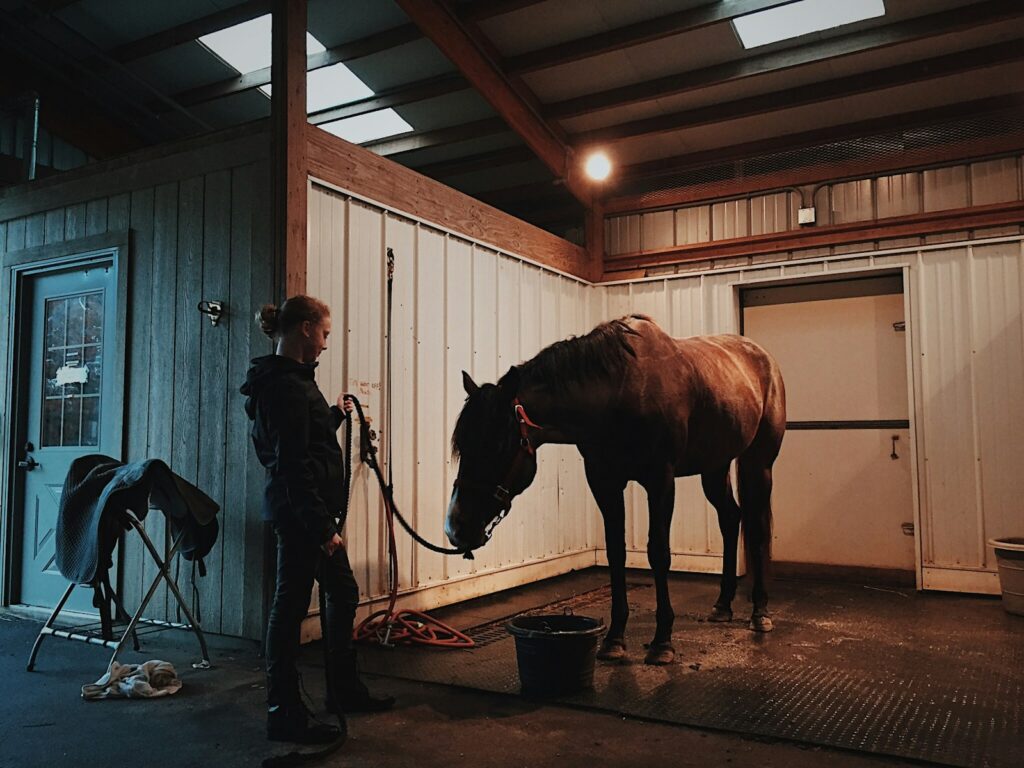
The environment in which you introduce the saddle plays a crucial role in your young horse’s acceptance and learning experience. Choose a familiar, enclosed space where your horse feels secure and distractions are minimized—typically a round pen or small paddock with good footing works well. Timing matters significantly; select a period when your horse is neither too fresh nor too tired, as either extreme can impede the learning process. Morning sessions after a brief turnout period often provide an ideal balance of alertness without excess energy. Ensure no other horses or animals will disrupt the training session, and have all equipment prepared and organized beforehand to maintain a smooth, stress-free progression. A calm, positive environment sets the psychological stage for successful acceptance of new experiences.
Desensitizing to Saddle-Related Objects

Before introducing the actual saddle, systematically desensitize your young horse to objects that mimic aspects of the saddle experience. Begin with soft items like towels or saddle pads, allowing the horse to see, smell, and feel these objects against different parts of its body. Gradually introduce items with more weight and structure, such as a folded blanket or a small tarp, placing them briefly on the horse’s back while monitoring its reaction. Use a training stick with a plastic bag attached to simulate unexpected movements and sounds the saddle might make. Daily sessions where you rub these objects along the girth area, over the back, and around the flank will build your horse’s tolerance for the sensations associated with saddling. This progressive desensitization helps prevent the startle response when the actual saddle is introduced, making the transition significantly smoother and less stressful for your equine partner.
Introducing the Saddle Through Scent and Sight
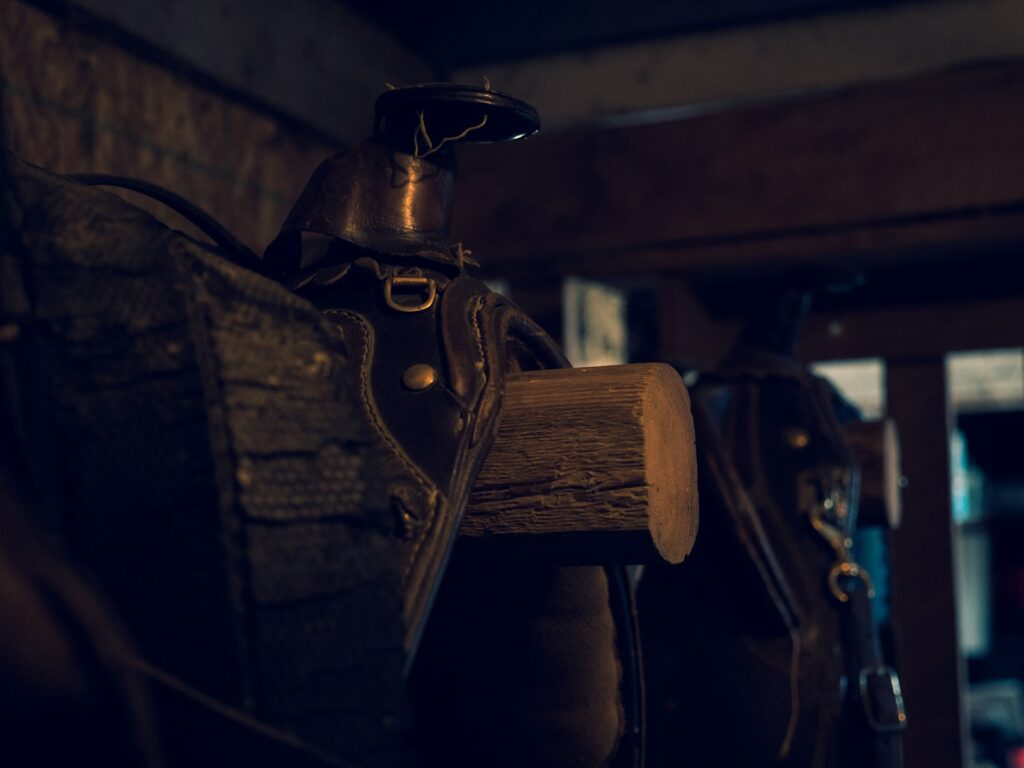
Horses are highly sensitive creatures that process new experiences through all their senses, with scent playing a particularly important role in their assessment of unfamiliar objects. Begin the saddle introduction by simply placing the saddle in your young horse’s environment—perhaps hung on a fence where the horse can observe it during daily activities without any pressure to interact with it. Allow your horse to approach and investigate the saddle at its own pace, offering reassurance and perhaps treats to create positive associations. Hold the saddle at different angles and heights near your horse, letting them sniff and observe the object that will soon become part of their working equipment. This visual and olfactory familiarization helps reduce the “fear of the unknown” factor, which often triggers the flight response in horses when unfamiliar objects suddenly appear in their personal space.
Simulating Saddle Weight and Pressure
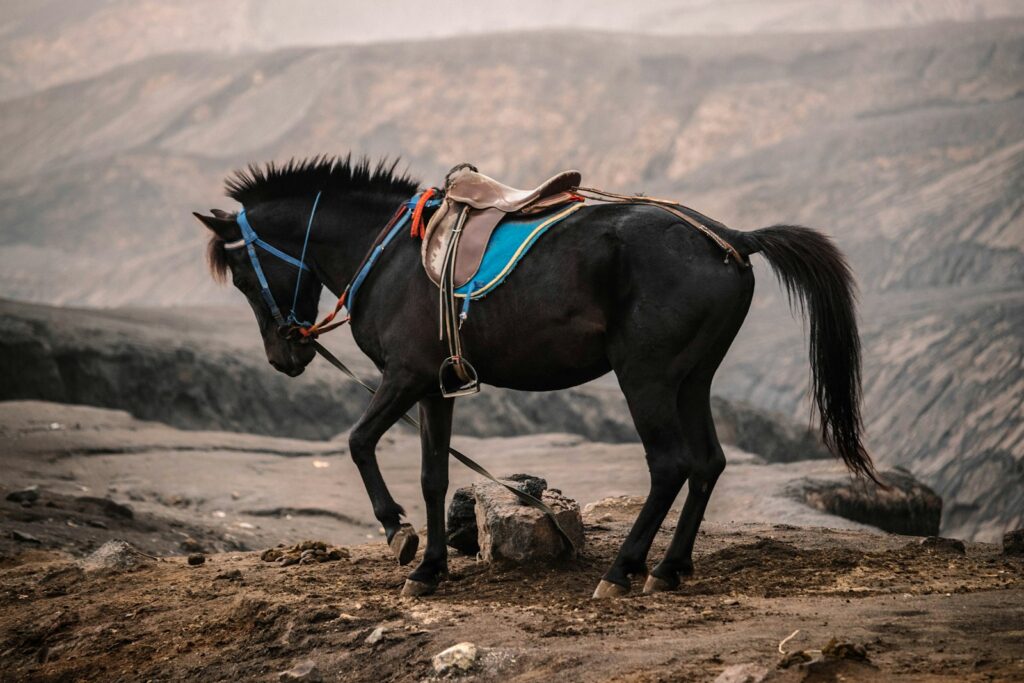
Before placing an actual saddle on your young horse’s back, gradually build tolerance for the weight and pressure sensation using progressive exercises. Begin with a folded blanket or specialized training pad, placing it briefly on the horse’s back and removing it before any resistance develops. Over several sessions, increase the duration the weight remains on their back, always ending on a positive note while the horse remains calm. Gradually add weight to your simulation by using heavier blankets or secure, weighted training devices designed for this purpose. Incorporate movement into these sessions by asking your horse to walk a few steps with the weight in place, gradually building to all gaits within a controlled environment. These preparatory exercises condition your horse to accept the substantial weight and pressure of a real saddle without becoming anxious or resistant.
The First Saddling Approach
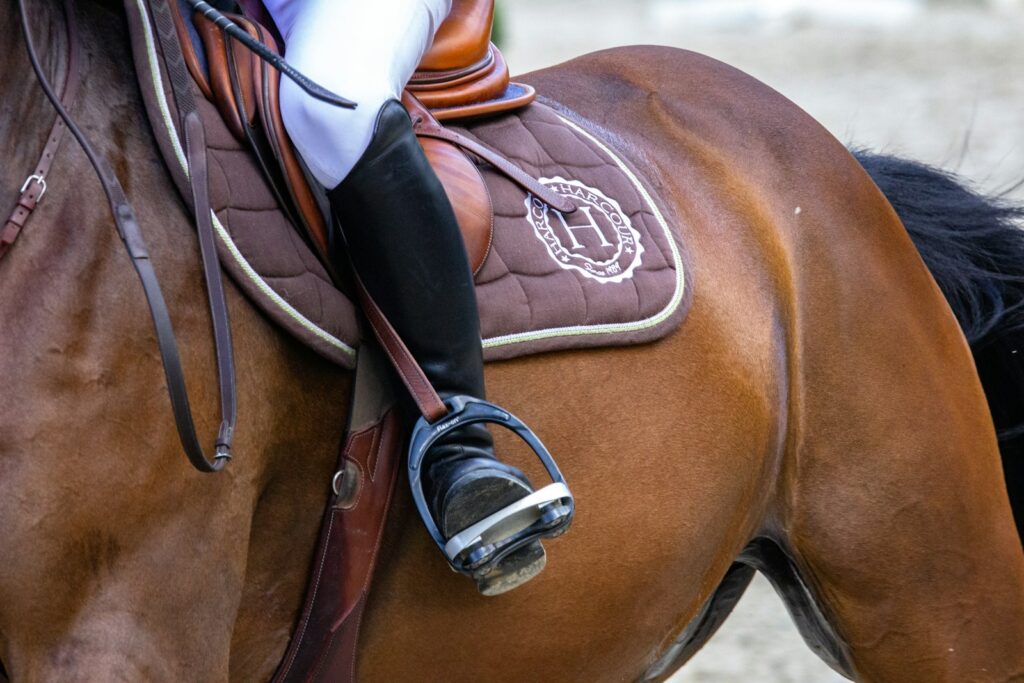
When your young horse has demonstrated consistent comfort with the preliminary desensitization work, you can proceed to the actual first saddling with methodical care. Choose a lightweight saddle appropriate for training—many trainers prefer a synthetic western saddle that won’t shift unnecessarily and provides a secure foundation. Begin by allowing your horse to inspect the saddle once more before carefully placing it on their back, positioning it slightly forward initially, then sliding it into proper position rather than dropping it directly in place. Keep the cinch loose and hanging freely during this first placement, focusing solely on the horse’s acceptance of the saddle’s presence on their back. Watch closely for signs of tension such as tail swishing, ear pinning, or raised head, and remain ready to remove the saddle if the horse shows significant stress. This first actual saddling should be brief—perhaps just 30-60 seconds—ending while the horse remains calm to reinforce a positive association.
Introducing the Cinch Gradually
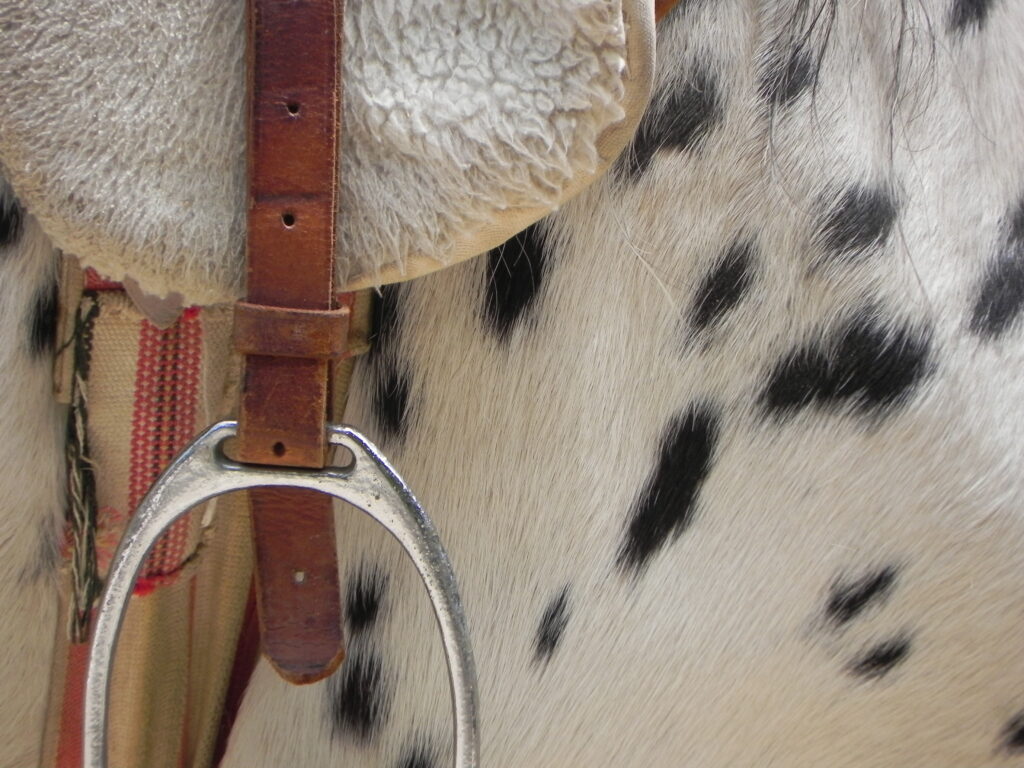
The cinch or girth represents one of the most challenging aspects of saddle training for young horses, as it creates unfamiliar pressure around a sensitive area of their body. After several successful sessions of placing and removing the saddle without tightening the cinch, begin the cinching process with extreme graduality. Start by simply bringing the cinch against the horse’s belly without fastening it, allowing them to become accustomed to the feeling of something touching this sensitive area. When your horse accepts this contact calmly, fasten the cinch at its loosest setting—just enough to prevent the saddle from sliding if the horse moves. Over multiple sessions, incrementally increase the tightness, always checking your horse’s response before proceeding. Alternate between tightening and loosening the cinch during each session to prevent the horse from developing negative anticipation of the cinching process.
Managing Movement with the Saddle
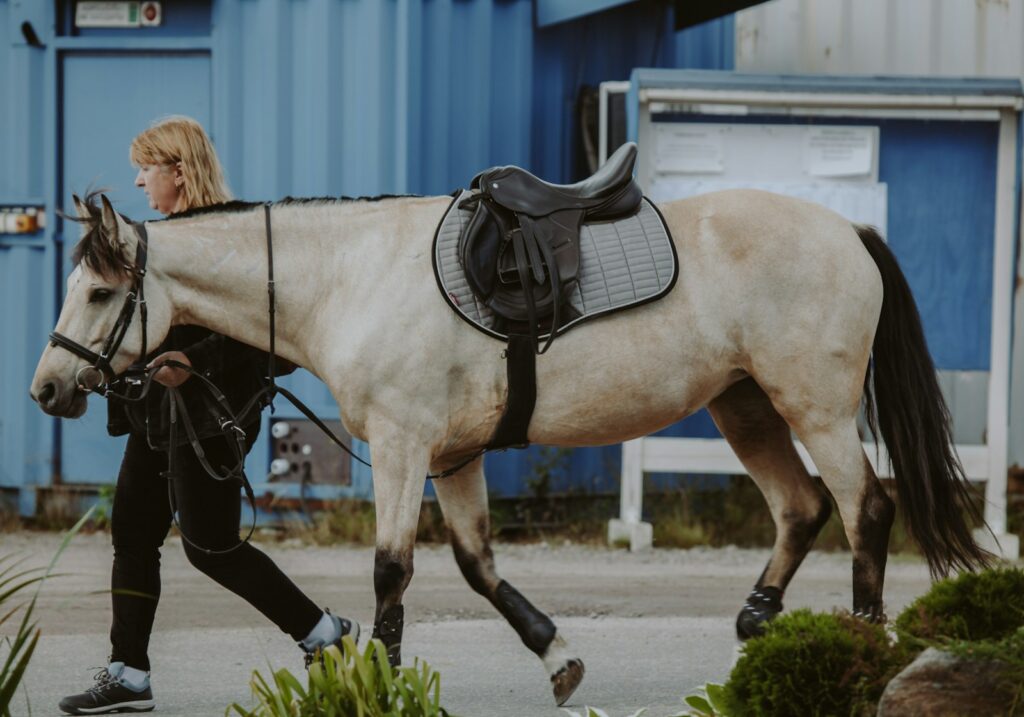
Once your young horse accepts the saddle placed on its back with a loosely fastened cinch, the next critical phase involves introducing controlled movement. Begin by asking the horse to walk forward just a few steps while you maintain control via a lead rope, providing reassurance and monitoring how the horse responds to the saddle’s shift and movement. Gradually extend these walking sessions, incorporating gentle turns that cause the saddle to subtly shift its weight distribution on the horse’s back. Progress methodically to trotting in a round pen or on a lunge line, where the increased movement creates more significant saddle motion that the horse must process and accept. Throughout these movement sessions, watch carefully for signs of discomfort like bucking, stiffening, or tail wringing, which indicate you may need to return to a previous step or check your saddle fit. Consistent, gradual exposure to the saddle during movement builds the horse’s confidence and physical adaptation to carrying this equipment.
Addressing Resistance or Fear Behaviors

Even with methodical training, some young horses will exhibit resistance behaviors when learning to accept the saddle. These responses—which may include freezing, attempting to move away, bucking, or showing tension through pinned ears or raised tail—should be viewed as communication rather than disobedience. When resistance occurs, immediately assess whether you’ve progressed too quickly or if something about the saddle is causing discomfort, such as pinching or improper positioning. Rather than punishing these behaviors, return to the most recent step where your horse demonstrated comfort and rebuild confidence from that point. Use positive reinforcement by releasing pressure and offering praise precisely when your horse shows even slight acceptance. For more pronounced fear responses, specialized techniques like approach and retreat, where you bring the saddle close but remove it before the horse reaches peak anxiety, can gradually build tolerance without triggering the fight-or-flight response.
Adding Stirrups and Movement Simulation
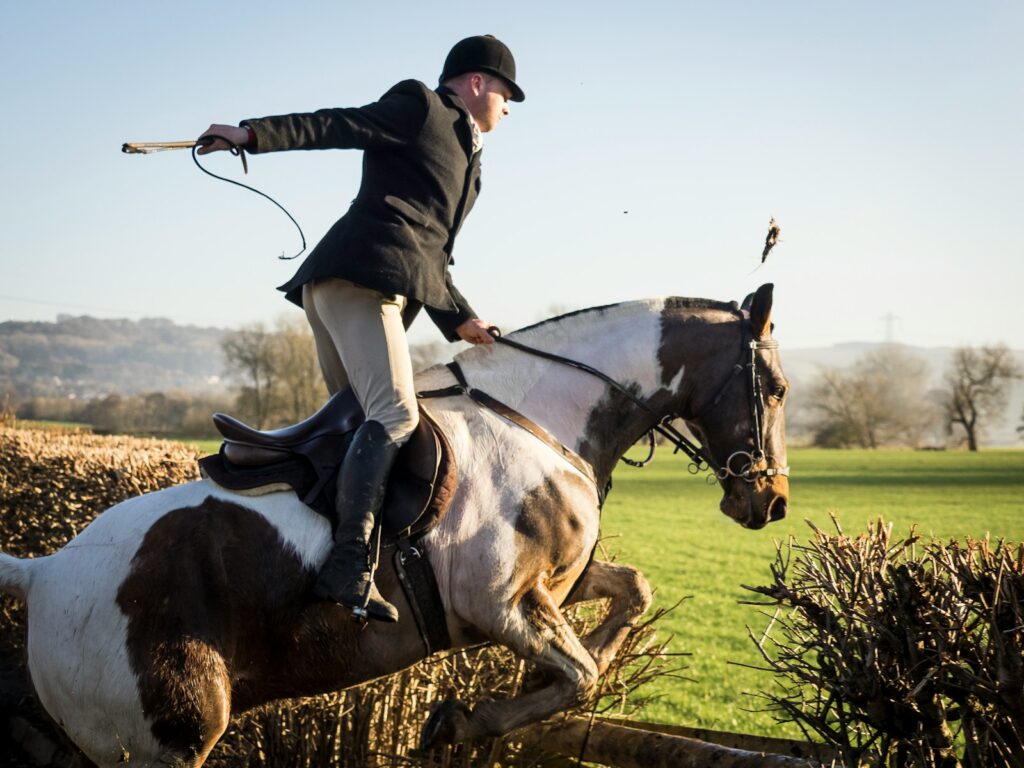
Once your young horse confidently accepts the saddle with a properly tightened cinch, introduce the additional elements that create movement and noise during riding. If using an English saddle, begin by securing the stirrup leathers against the saddle during initial sessions, then gradually lower them to their normal position. For western saddles, secure the stirrups initially to prevent unexpected movement before allowing them to hang naturally. Create controlled simulation of a rider’s movement by gently bouncing your hands on the saddle, then progressing to leaning weight against the stirrups while standing alongside your horse. Add rhythmic movements that mimic a rider’s leg aids by tapping and pressing the saddle in various places. Throughout these exercises, maintain control of your horse’s movement through groundwork patterns that keep their mind engaged while they process these new sensations, building their confidence with each successful session.
Incorporating Ground Driving with the Saddle
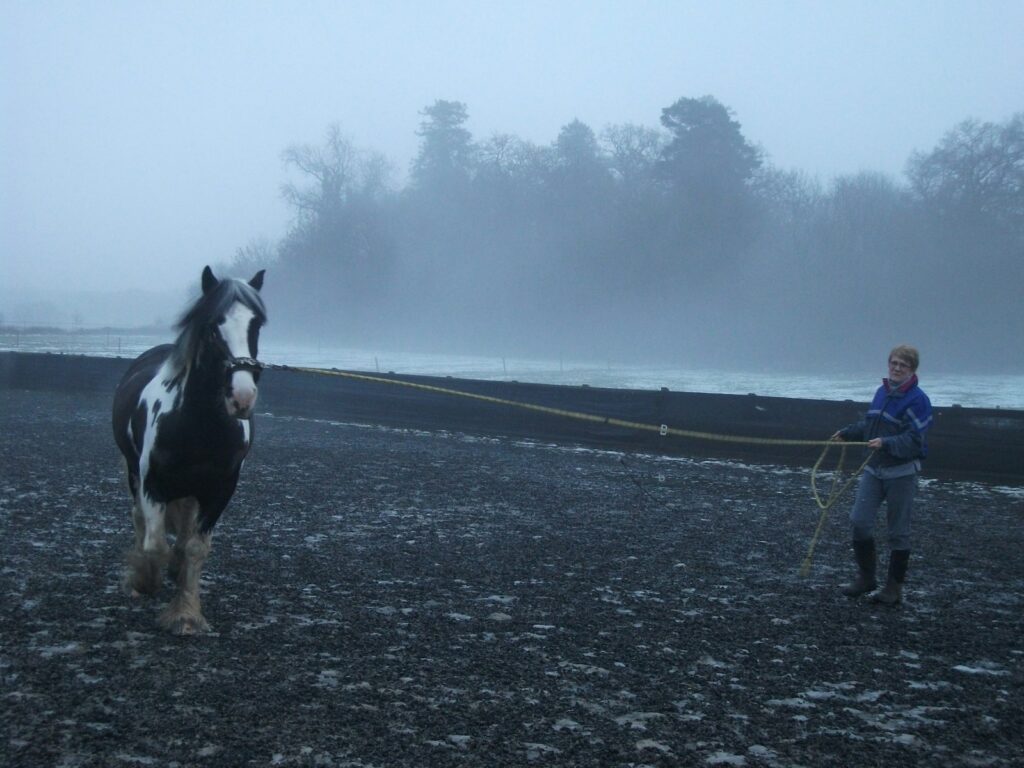
Ground driving provides an excellent bridge between accepting the saddle and carrying a rider, allowing the young horse to become accustomed to directional cues while processing the sensation of the saddle. Begin by introducing long lines or driving reins with the saddle in place, using a surcingle or the saddle itself to position the reins at the appropriate height. Start in a small enclosed area with simple straight-line walking, providing clear, consistent cues for forward movement, halting, and turning. As your horse’s confidence grows, incorporate more complex patterns including figure eights, serpentines, and transitions between gaits while maintaining the saddle in position. This ground driving phase develops your horse’s understanding of rein pressure and directional guidance while simultaneously normalizing the saddle’s presence during active movement. These sessions build the mental and physical coordination necessary for the eventual addition of a rider’s weight.
Progressing to Weight in the Stirrups
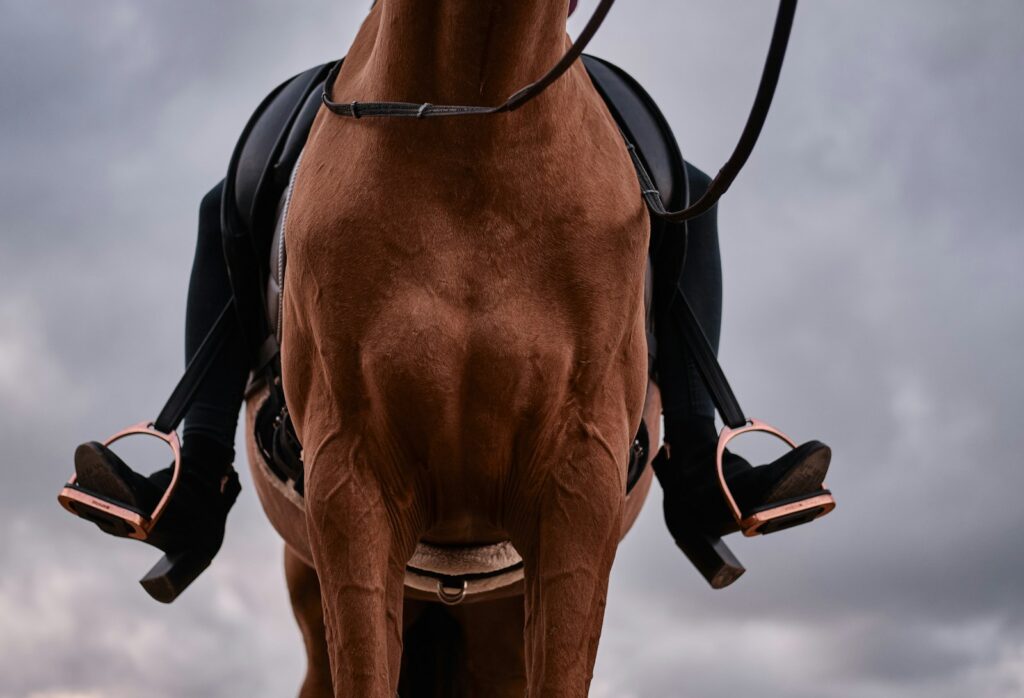
After your young horse demonstrates consistent comfort with the saddle during active movement, introduce the sensation of weight in the stirrups to prepare for an actual rider. Begin by applying light downward pressure on one stirrup while standing beside your horse, monitoring their reaction carefully, and releasing the pressure before any anxiety develops. Gradually increase the duration and pressure applied to both stirrups simultaneously, simulating the approximate weight a rider’s feet would create. Some trainers utilize specially designed training devices that can add weighted pressure to both stirrups simultaneously, allowing the horse to experience balanced weight distribution similar to a rider. Incorporate this stirrup pressure during movement sessions, lunging the horse with the weighted stirrups to help them adjust to the sensation of shifting weight during different gaits. This methodical introduction to weight bearing helps prevent the startled reaction many young horses display when first feeling a rider’s full weight in the saddle.
Final Preparations Before Rider Mounting
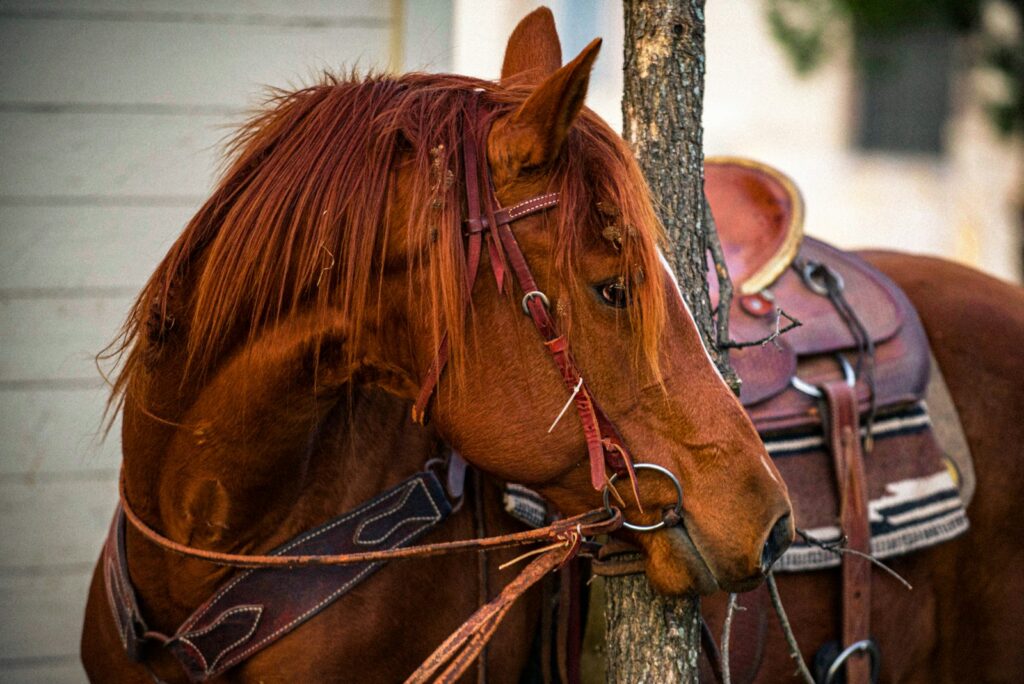
Before introducing the actual rider, conduct thorough final assessments to ensure your young horse is truly prepared for this significant step. Verify that your horse stands quietly for saddling with minimal restraint, accepts the fully tightened cinch without resistance, and moves comfortably at all gaits while wearing the saddle with weighted stirrups. Practice the mounting routine extensively, including having your horse stand at a mounting block while you place weight in the stirrup and lean across the saddle. Introduce the sensations of a rider’s legs by draping yourself across the saddle and gently applying leg pressure to both sides of the horse’s barrel. Throughout these final preparations, incorporate the verbal cues you’ll use when riding, such as voice commands for walk, trot, and halt, creating consistent language your horse will recognize when you’re in the saddle. These comprehensive final steps ensure your young horse transitions to carrying a rider with confidence rather than confusion or fear.
Maintaining Consistent Saddle Training
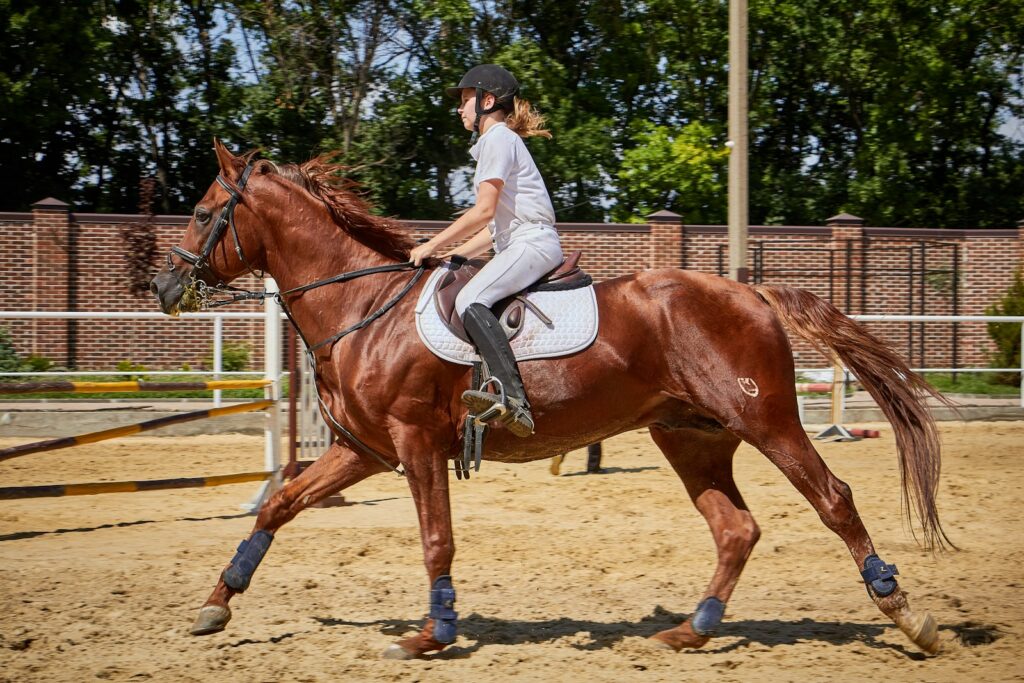
Once your young horse has successfully accepted the saddle, consistent reinforcement remains essential to solidify this training. Establish a regular saddling routine that incorporates all the elements you’ve introduced—from grooming preparation to proper saddle placement and cinch tightening—performed in the same sequence each time to build your horse’s confidence through predictability. Even after your horse begins carrying a rider, periodically return to groundwork exercises with the saddle in place to reinforce basic responses and maintain the horse’s relaxation with the equipment. Address any regression immediately by returning to earlier steps in the training progression rather than forcing compliance, which can create long-term resistance. Remember that changes in saddle type, fit, or even extended periods without saddling may require brief refreshers of the acceptance training. This ongoing maintenance ensures that saddle acceptance remains a positive, stress-free experience throughout your horse’s working life.
Conclusion
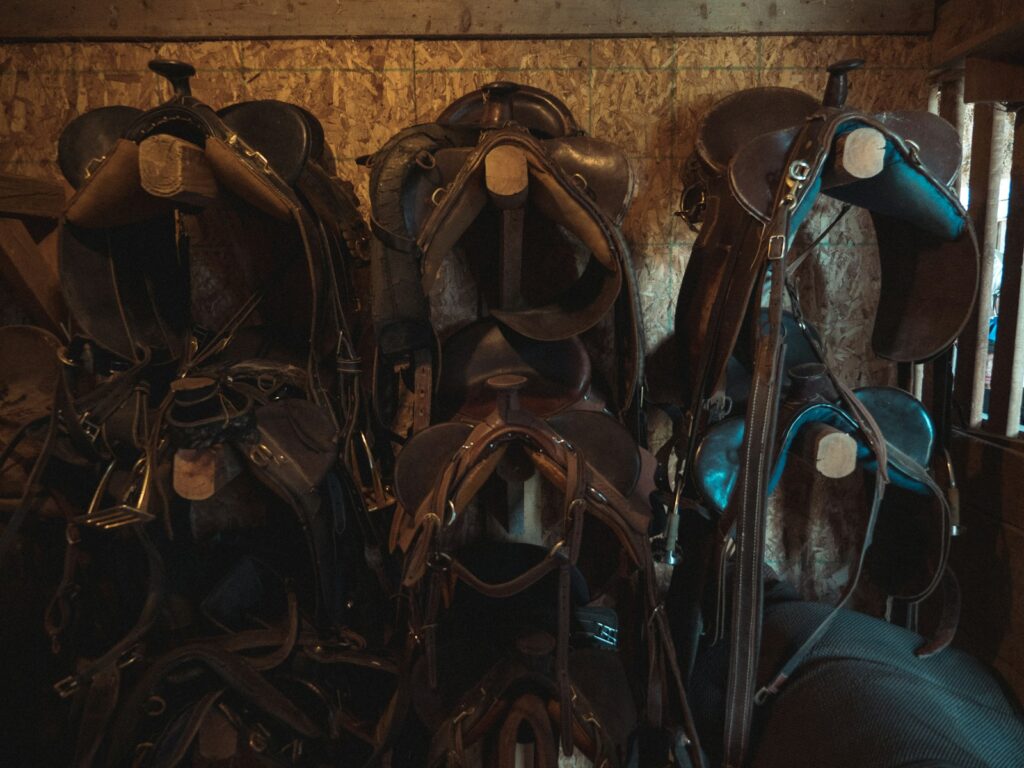
Teaching a young horse to accept a saddle represents one of the most fundamental aspects of equine training, requiring patience, consistency, and a deep understanding of equine psychology. By following a methodical approach that respects your horse’s learning process—from basic desensitization through gradual weight introduction and finally to carrying a rider—you establish not just compliance but genuine confidence. The investment of time in proper saddle training pays dividends throughout your horse’s career, preventing the development of resistance behaviors that can become deeply ingrained when this process is rushed. Remember that each horse progresses at its own pace; some may accept the saddle within a few sessions, while others might require weeks of careful introduction. By honoring your individual horse’s needs and maintaining a positive training environment, you create a willing equine partner who approaches saddling and riding with trust rather than trepidation.

